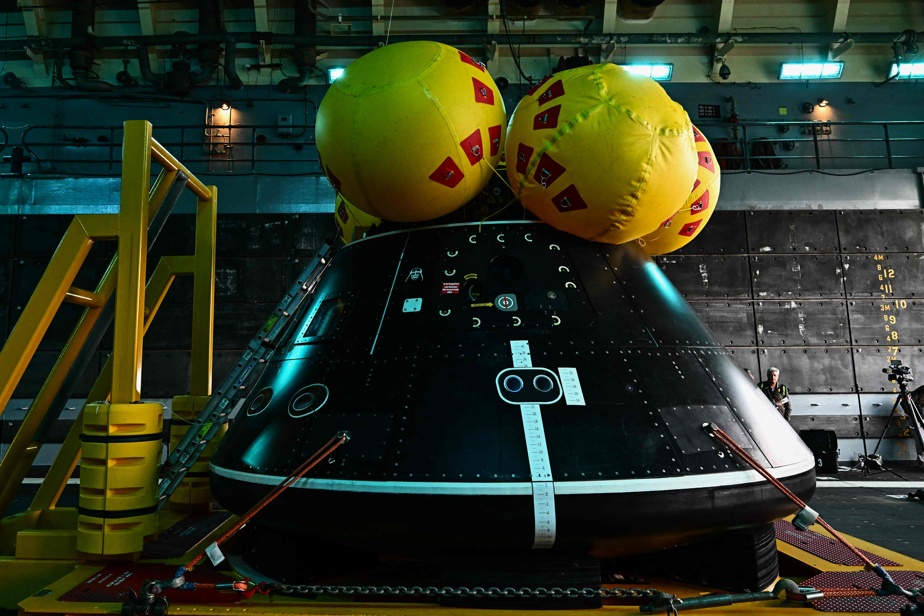(Washington) A Japanese astronaut will be the first non-American to land on the Moon, as part of a mission of the American Artemis program, the leaders of the two countries said Wednesday.
The United States thus offered Japan a place that many nations would have dreamed of securing — at the risk of disappointing other partners.

PHOTO HAIYUN JIANG, THE NEW YORK TIMES
US President Joe Biden and Japanese Prime Minister Fumio Kishida at the White House on Wednesday
“Two Japanese astronauts will take part in future American missions, and one of them will be the first non-American to land on the Moon,” declared the President of the United States, Joe Biden, during a conference of joint press in Washington with Japanese Prime Minister Fumio Kishida.
The latter, on an official visit, hailed “a tremendous success in the space field”, announcing that Japan would provide in exchange an ultra-sophisticated lunar rover.
The American Artemis program aims to establish a lasting human presence on the Moon, and must send there the first woman and the first person of color.
Between 1969 and 1972, the Apollo program took 12 American men there, all white. These are the only 12 people to have set foot on lunar soil.
“America will no longer walk on the Moon alone,” NASA boss Bill Nelson rejoiced on Wednesday in a video posted on social networks. “Diplomacy is good for discoveries. And the findings are good for diplomacy,” he added.
The first Artemis mission to return astronauts to the lunar surface, Artemis 3, is planned for 2026.
China plans to send humans to the Moon by 2030.
Close cooperation
Tokyo and Washington already cooperate closely in the space domain, notably within the framework of operations of the International Space Station.
The two countries said they plan to “deepen their cooperation on astronaut training” to achieve their new goal, according to a joint statement from the two leaders.
But for a Japanese astronaut to actually become the first non-American on the Moon, “significant steps” will “have to be taken,” according to the statement.
The rover that Japan will provide will be pressurized, unlike the lunar vehicles ordered by NASA from private American companies.
In a pressurized rover, astronauts will not need to wear suits and will be able to travel greater distances.
“It’s a mobile habitat, a laboratory, a house and a lunar explorer,” said Bill Nelson.
Two astronauts should be able to live there for up to 30 days in a row, said NASA, which said it would like to be able to use it from the Artemis 7 mission.
Successive missions
The European Space Agency (ESA) is also to be reserved seats on Artemis missions in exchange for significant technological contributions.
The Artemis program was inaugurated in 2022 with Artemis 1, which successfully flew a vacuum craft around the Moon.
Artemis 2 is scheduled for 2025 and is expected to send four astronauts on a trip around the Moon, without landing there. There will be three Americans and one Canadian, already in training.
Artemis 3 should then be the first manned mission to land on the lunar surface since 1972. The composition of its crew is not yet known.
Asked by AFP about the mission in which a first Japanese astronaut would take part, NASA simply replied that it had not made any announcement of crews beyond Artemis 2.
In January, Japan also became the fifth country to have successfully landed on the Moon, by landing a robot there.
